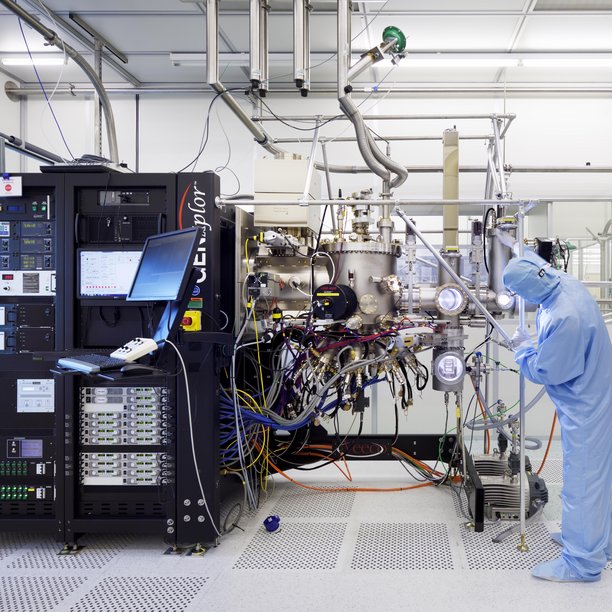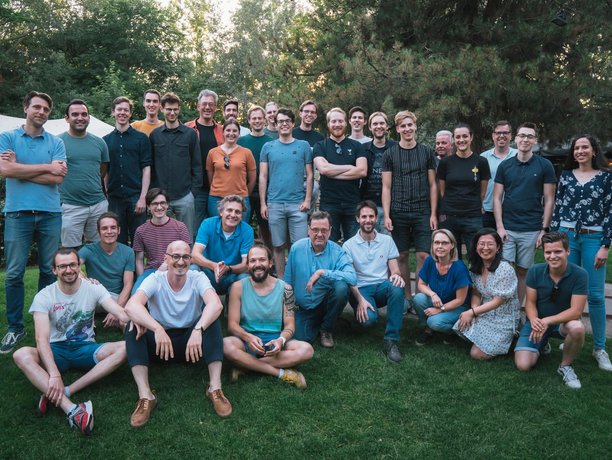Fascinating nanowires and exciting research areas
We explore the unusual (quantum) properties of these new designer nanomaterials for future applications and to boost the performance of existing (opto)electronic devices. For example, topological surface states are predicted to carry dissipation-less currents and to be a precursor for new quantum states, 2D materials exhibit extraordinary ultrafast thermodynamic properties with great potential towards data communication and thermal management applications, and light-emitting SiGe will enable faster and more energy-efficient chips and connecting to distant quantum bits.
Research topics
Within our group we focus on several research topics. Topics that can be game-changers in (electronics) industry, quantum technique and quantum materials. We dive into the properties of materials, explore new methods, look into (im)possibilities of usage in applications and what value it brings. Click on the following links to learn more about each topic.
Meet some of our Researchers
Work with us!
Do you want to be part of the fundament of change and contribute to a brighter tomorrow for us all? Please check out the TU/e Vacancies page for further opportunities within our group.
Recent Publications
Our most recent peer reviewed publications
-
Fabrizio Rovaris,Wouter H.J. Peeters,Anna Marzegalli,Frank Glas,Laetitia Vincent,Leo Miglio,Erik P.A.M. Bakkers,Marcel A. Verheijen,Emilio Scalise
2H-Si/Ge for Group-IV Photonics
ACS Applied Nano Materials (2024) -
Roberta Farris,Olle Hellman,Zeila Zanolli,Sebin Varghese,Pablo Ordejón,Klaas Jan Tielrooij,Matthieu Jean Verstraete
Microscopic understanding of the in-plane thermal transport properties of 2H transition metal dichalcogenides
Physical Review B (2024) -
Xiaohui Guan,Xinyu Fan,Enze Zhu,Jiqing Zhang,Liu Yang,Penggang Yin,Xin Guan,Guangsheng Wang
Controlled establishment of advanced local high-entropy NiCoMnFe-based layered double hydroxide for zinc batteries and low-temperature supercapacitors
Journal of Colloid and Interface Science (2024) -
Lior Shani,Pim Lueb,Gavin Menning,Mohit Gupta,Colin Riggert,Tyler Littmann,Frey Hackbarth,Marco Rossi,Jason Jung,Ghada Badawy
Diffusive and ballistic transport in thin InSb nanowire devices using a few-layer-graphene-AlOx gate
Materials for Quantum Technology (2024) -
Floriana Morabito,Kevin Synnatschke,Jake Dudley Mehew,Sebin Varghese,Charles James Sayers,Giulia Folpini,Annamaria Petrozza,Giulio Cerullo,Klaas-Jan Tielrooij,Jonathan Coleman
Long lived photogenerated charge carriers in few-layer transition metal dichalcogenides obtained from liquid phase exfoliation
Nanoscale Advances (2024)
News
![[Translate to English:] [Translate to English:]](https://assets.w3.tue.nl/w/fileadmin/_processed_/7/0/csm_Tielrooij%20Banner%20image%20Graphene%20iStockphoto_e02a7a0507.jpg)





Contact
-
Visiting address
Flux, room 2.104Groene Loper 195612 AP EindbovenNetherlands -
Visiting address
Flux, room 2.104Groene Loper 195612 AP EindbovenNetherlands -
Postal address
Department of Applied PhysicsFluxP.O. Box 5135600 MB EindhovenNetherlands -
Secretary
![[Translate to English:] [Translate to English:]](https://assets.w3.tue.nl/w/fileadmin/_processed_/2/f/csm_Advanced_Nanomaterials_and_Devices_Tremani-nature-FINAL-300dpi_preview_21dfa0de2b.jpeg)


